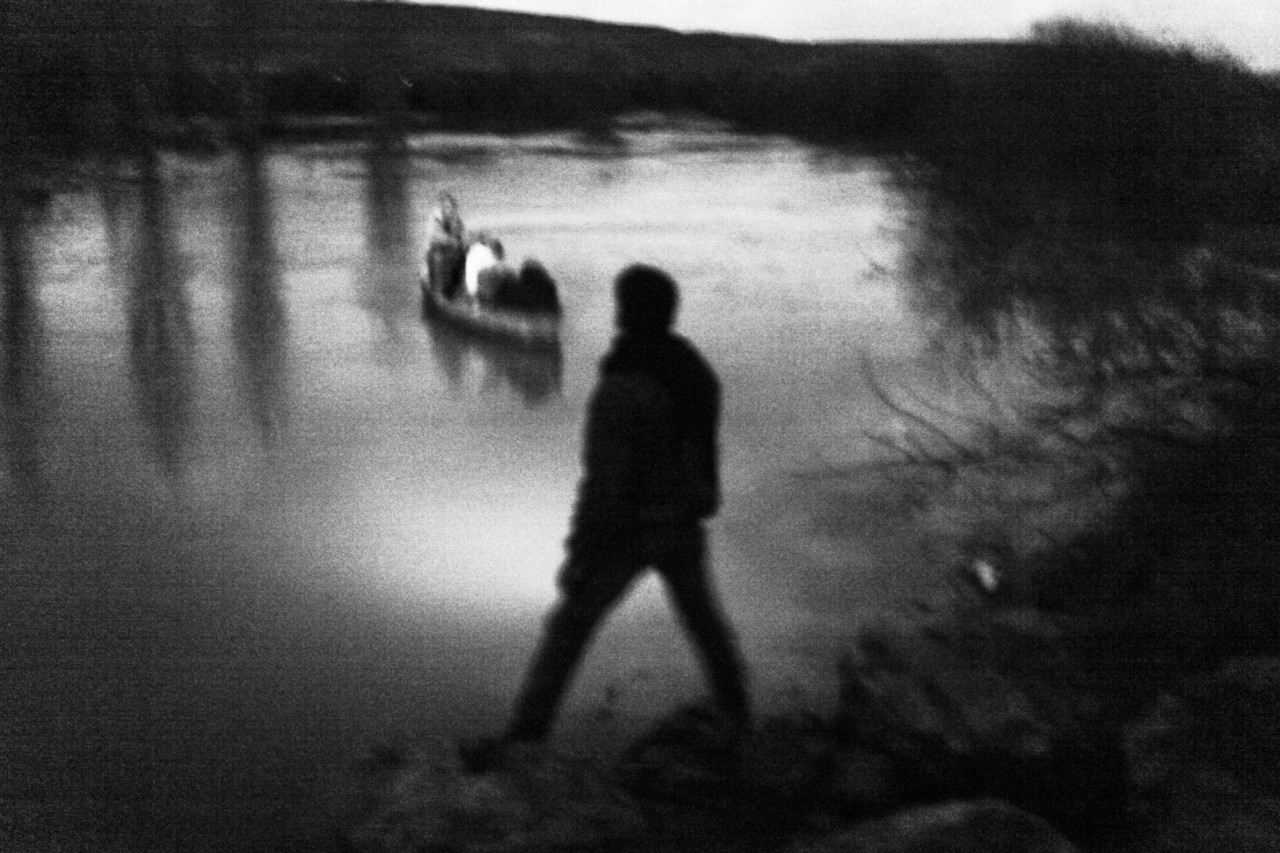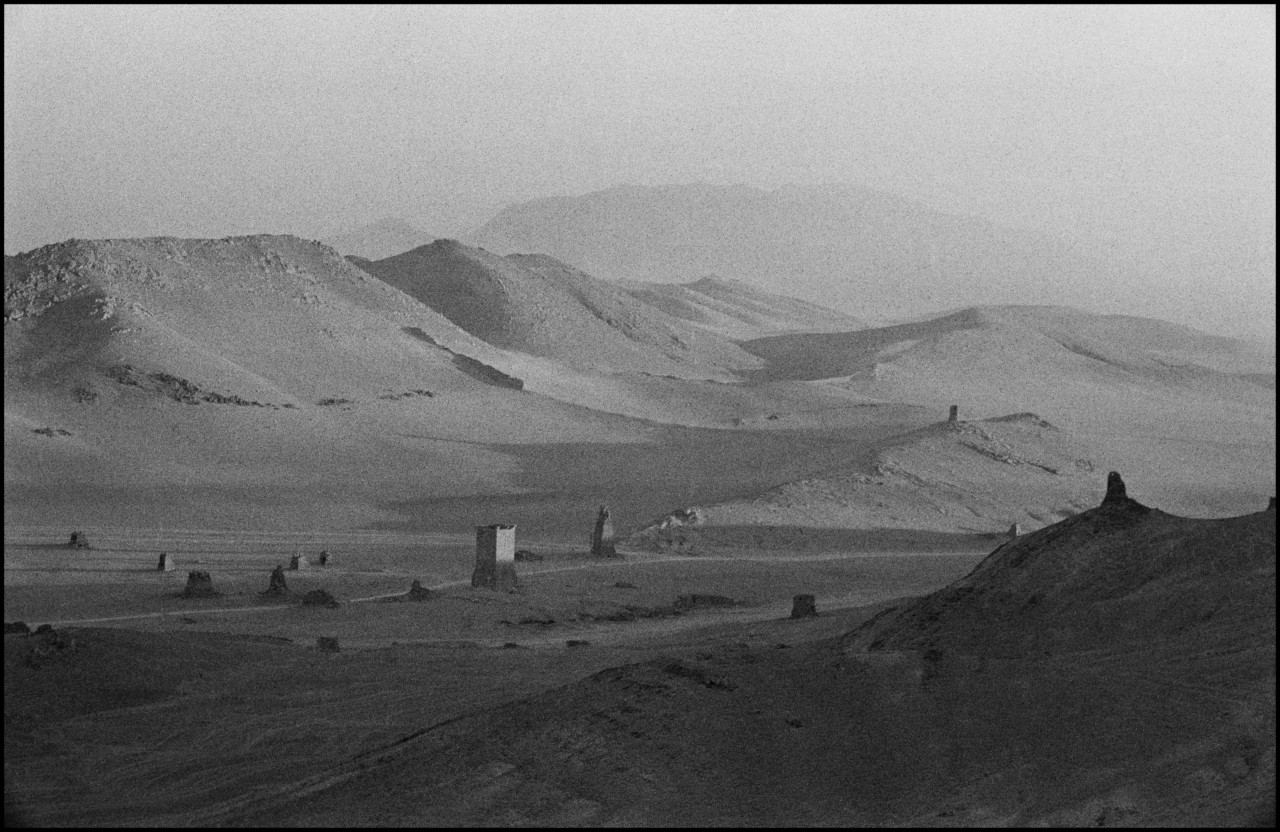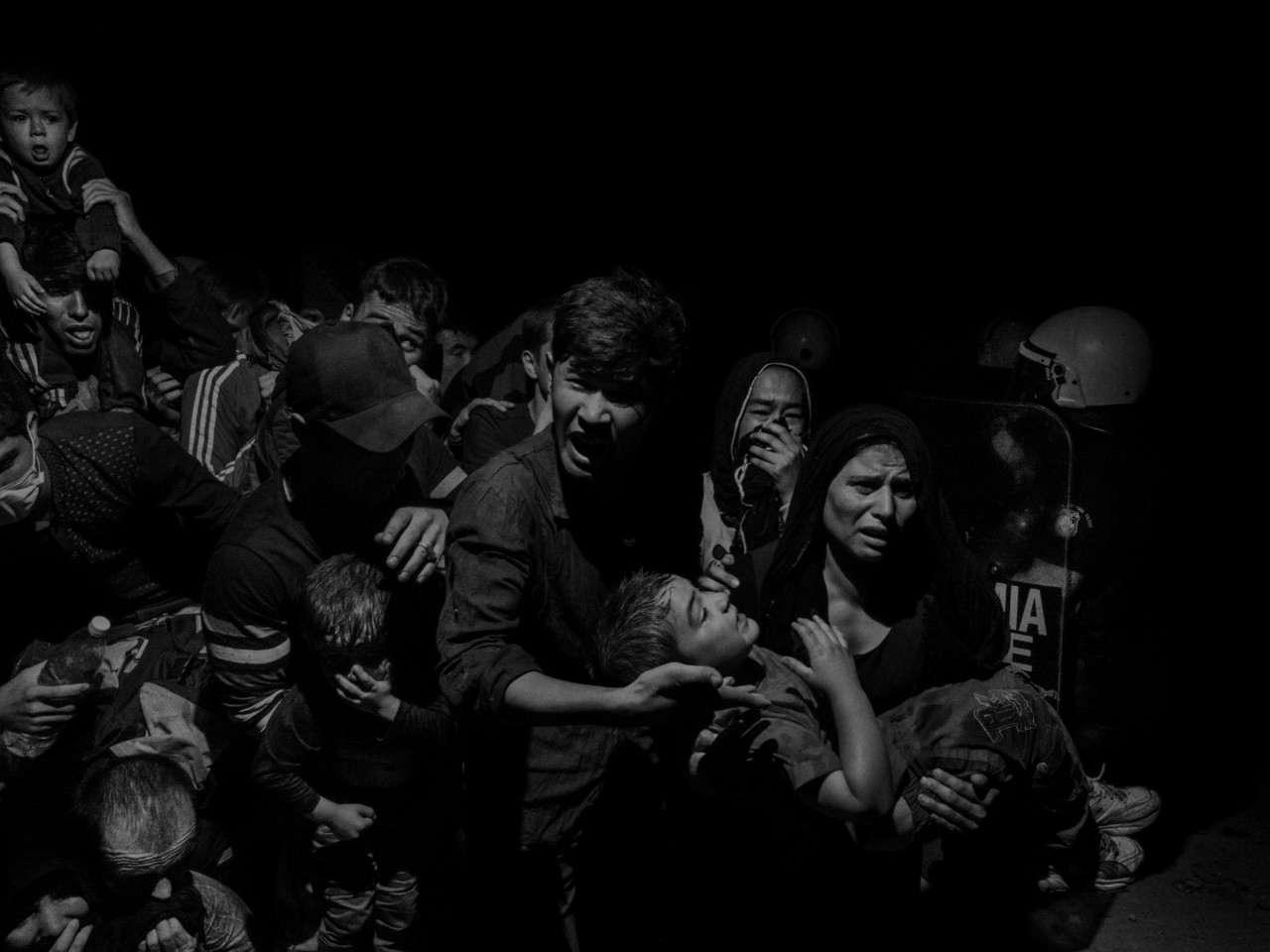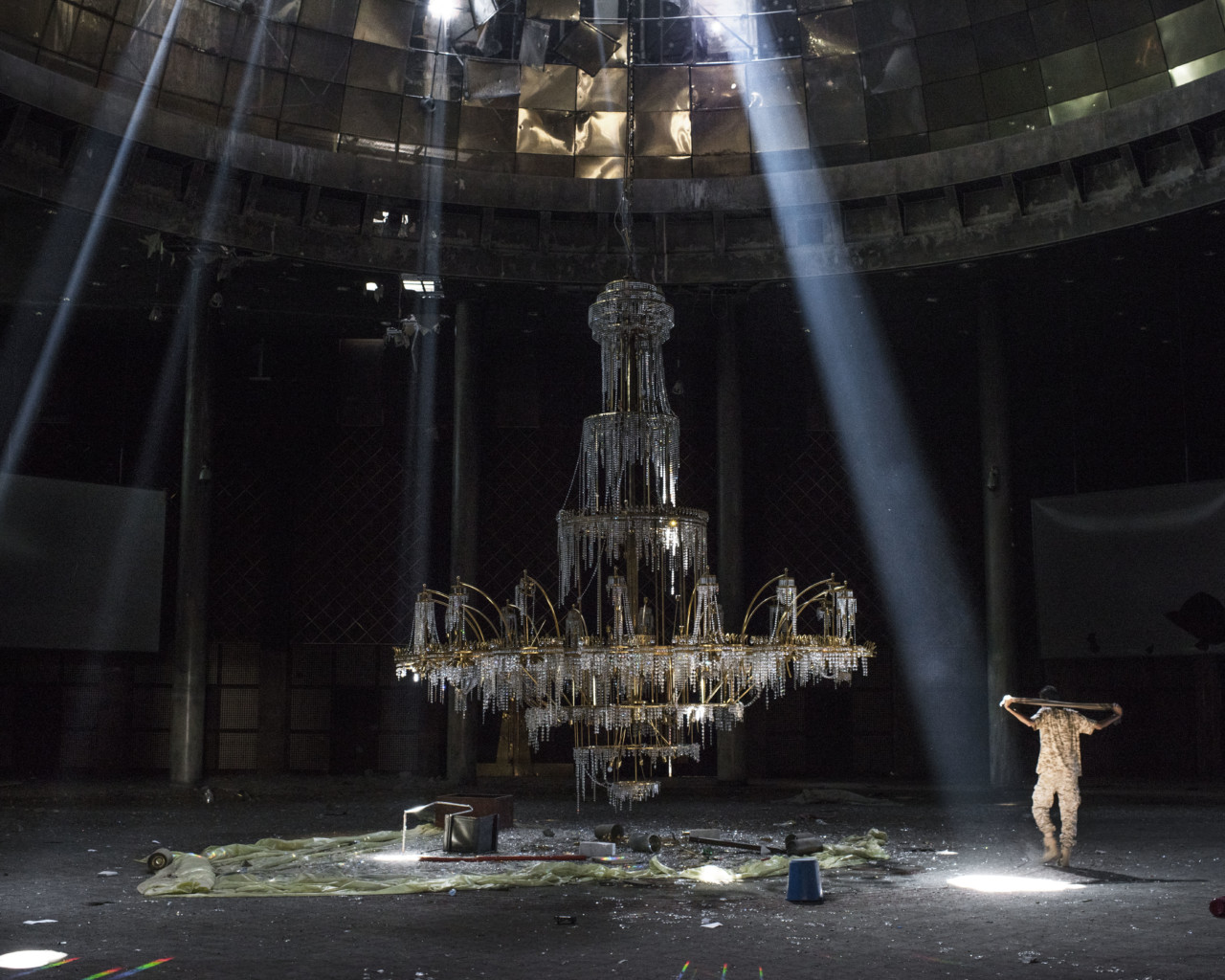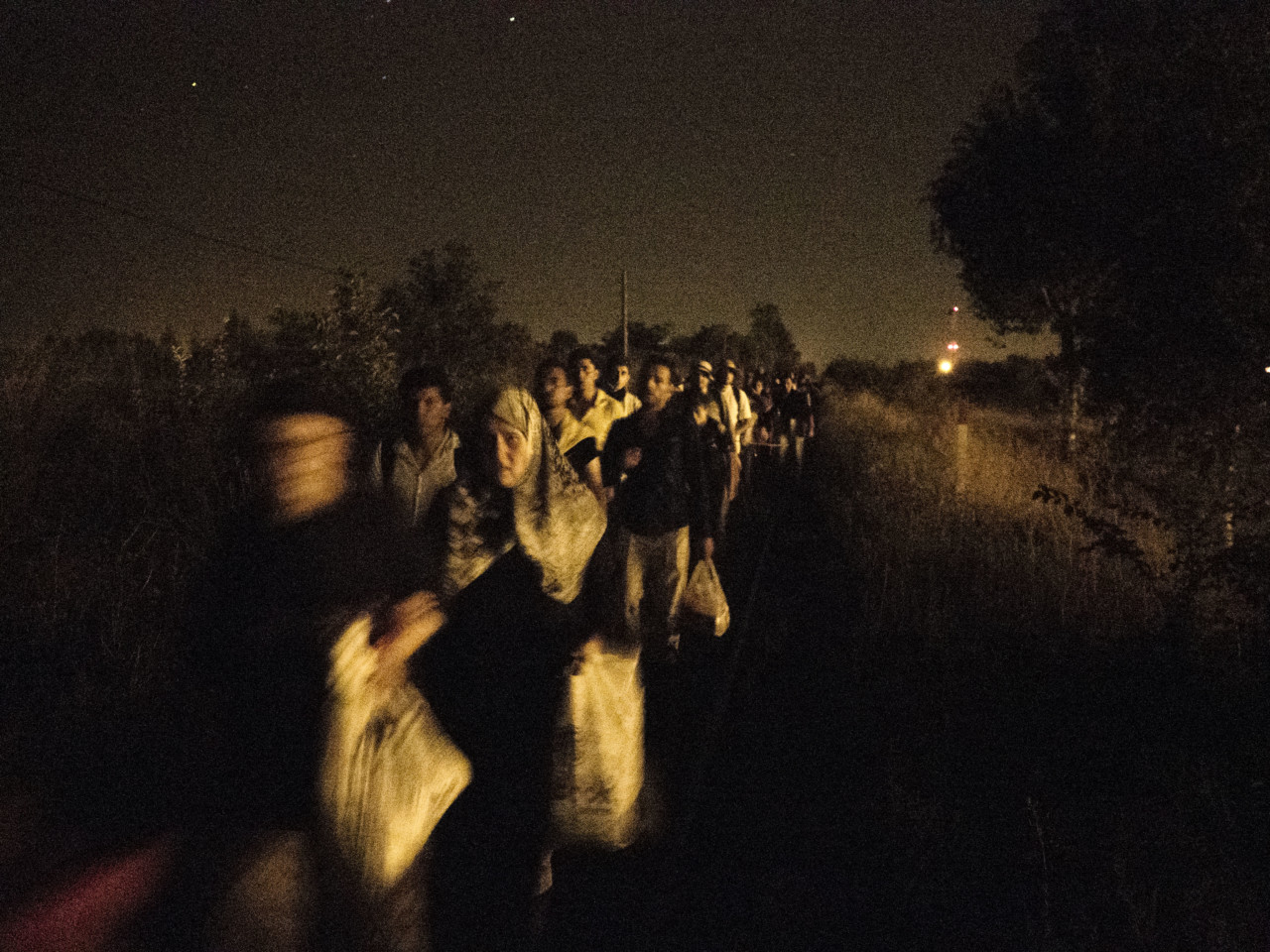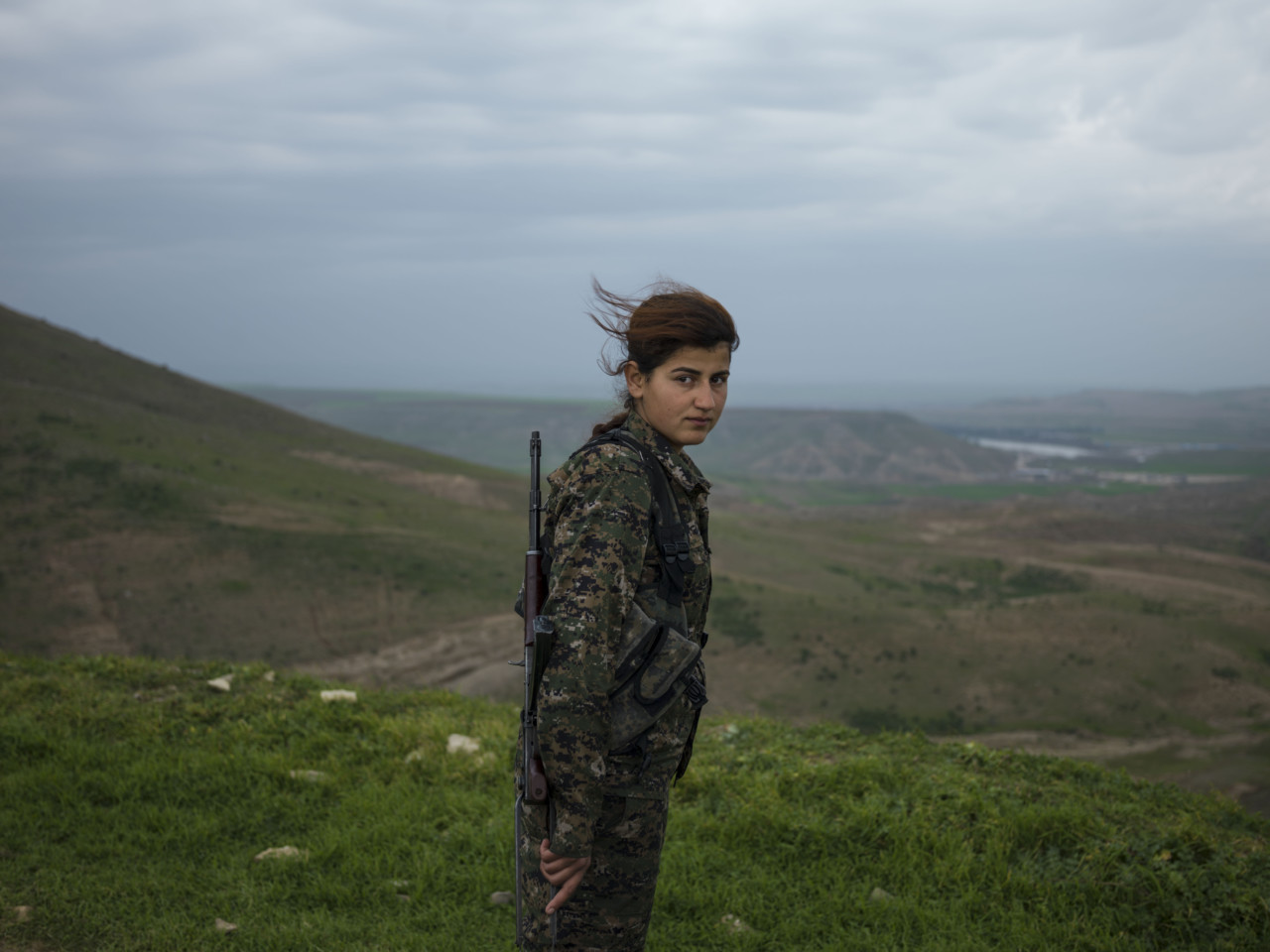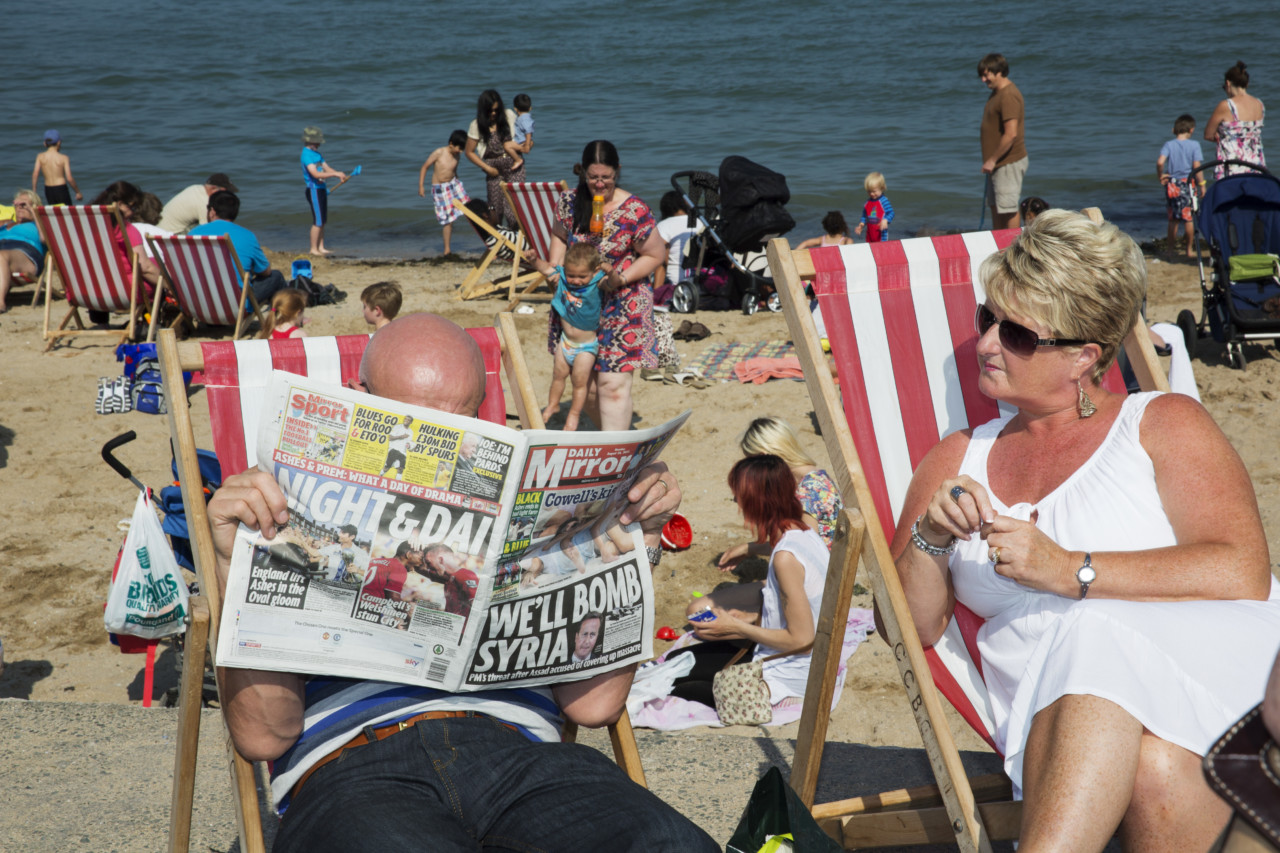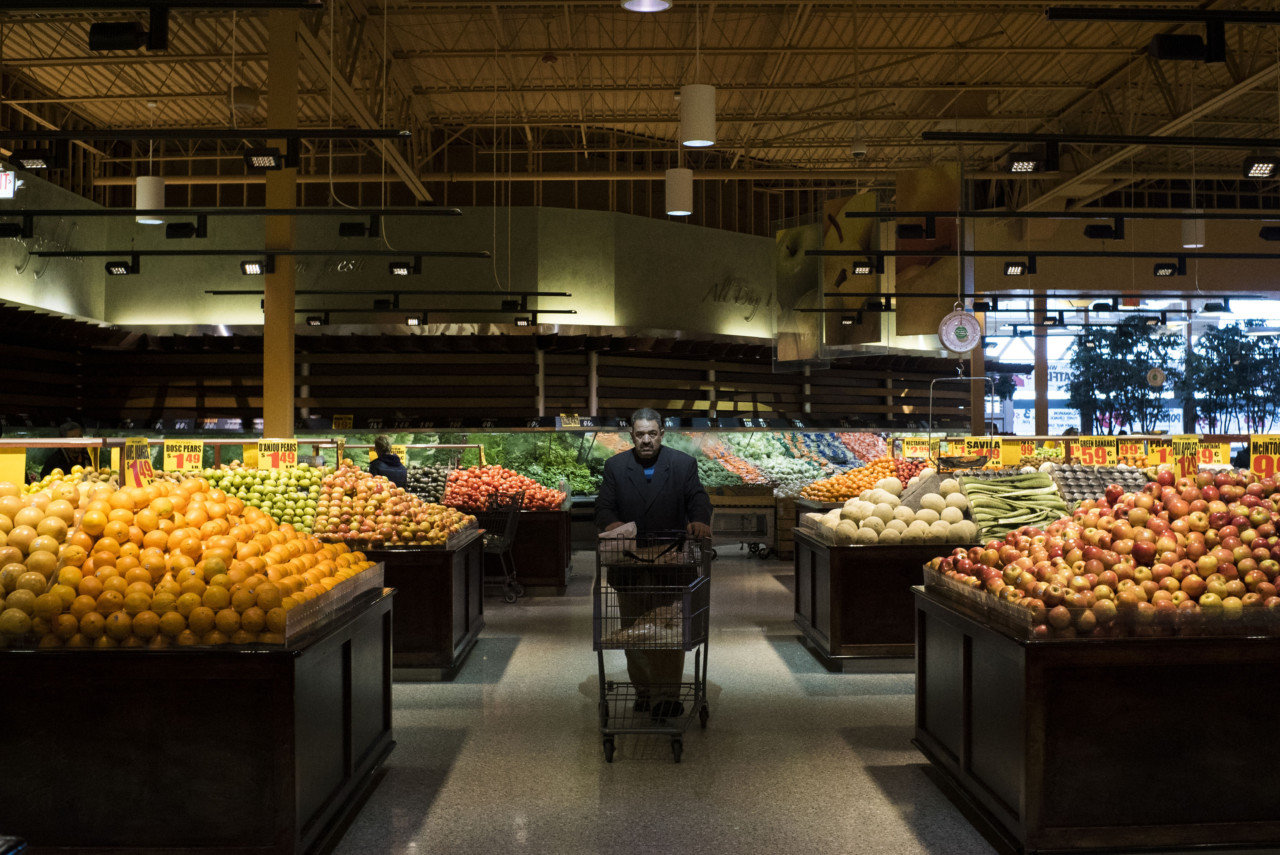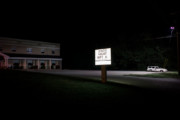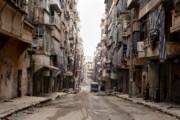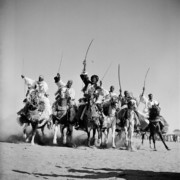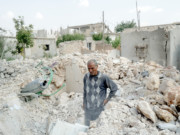Magnum Chronicles: A Brief Visual History in the Time of ISIS
Recent wars and the rise of ISIS are placed in the long view of history in Magnum's first Chronicle, a free, limited newspaper, distributed globally
Magnum Photographers
Magnum Chronicles is a new limited printed newspaper series, which aims to provide a new vehicle for exploring key issues in modern times, giving Magnum and its photographers a way to elevate their voice and experience as longstanding chroniclers of the world. Each newspaper will be curated by a different Magnum photographer, showcasing the breadth and depth of Magnum’s archive, combining contemporary images with archival to offer a unique perspective and context on subjects.
The aim is to create a series of intelligent, free, and democratic publications that inform, engage and entertain. Each newspaper will present visual narratives on global social and political issues through to lighter subjects of general interest. Each publication will also incorporate collaborations with experts and creatives across many disciplines and fields, and will be in several languages.
The first in the series entitled A Brief Visual History in the Time of ISIS is curated by one of Magnum’s photographers, Peter van Agtmael, and includes an essay and timeline by Peter Harling – an expert on the Middle East, formerly of the International Crisis Group, and founder of Synaps, a fellowships program for young professionals from the Middle East eager to tackle their generation’s social, economic and political challenges. It includes over 40 images from the Magnum archive that traverse the history and effects of the fall out from ISIS and their actions over the recent past.
“History and how we interpret it is constantly in flux, but there are moments that demand thoughtful reflection without expectation of definitiveness. Magnum Chronicles allows us to react to critical issues with a timeliness that is difficult in a full length book,” writes Peter van Agtmael.
“The rise and seeming fall of the Islamic State is the most recent chapter in an era of unraveling in the Middle East. ISIS has captured the world’s attention in a way that decades of colonialism, authoritarianism and the external meddling from both regional and global powers have not. Without minimizing the impact of their crimes on millions of people, this work seeks to place ISIS in the context of the long view of history.
Magnum photographers have been documenting conflict, politics and social issues throughout the world with depth and nuance for more than seventy years. The work of nineteen photographers takes us from the final years of the French mandate in Syria in 1941 to the fall of Mosul in 2017. Peter Harling, an expert on the region, contributes a pointed essay and timeline. While there is much left to say, we hope that this work provides perspective with layers of complexity that are often lacking.” – Peter van Agtmael.
The following text by Peter Harling is published alongside images by Magnum photographers in the limited newspaper edition of Magnum Chronicles. Please see the bottom of the article for a link to the places where the newspaper will be released, which includes the Magnum Shop.
Where the Islamic State Hides
The Islamic State was long in the making. It is here to stay, if not in the Iraqi city of Mosul, then in people’s minds and our own memory. Under its current name or its next avatar, it likely will linger on in our lives like a trauma—a familiar fear, quick to surface, however deeply burrowed.
Indeed, it fills a hole we cannot plaster over: decaying power structures and social compacts throughout the Middle East, in parts of Africa and Central Asia, and in places closer to home, such as the urban fringes at the heart of Western societies. It taps into the same groundswell of inchoate anti-establishment anger that has been molded into virtually anything: from dissident democrats to insurgent republicans in recent American elections; from Occupy Wall Street to the Tea-Party movement; from a leftist takeover in Greece to its rightwing equivalent in Poland; from the British Brexit to the French Front National; and from hopeful uprisings in the Arab world to “ISIS,” their nihilistic antithesis.
The problem we face is an old one: the banality, the oddity of evil, which can seep into our lives and become the new normal. As this collection of images will show us, the “true” Islamic State may not be a beheading video, but a more ordinary scene.
To deny its hold on our reality, we make the Islamic State into something extraordinary, exogenous—a creature from the past, from an exotic elsewhere, with an inhuman rationality. But it doesn’t just mangle: it mingles too. Craving attention, it keeps creeping up on us, seeking ways to photobomb the course of history. And it is, without doubt, media-savvy: digitally-native, almost geeky in its use of modern communication tools; it promotes itself much less through a coherent ideology than via the equivalent of an aggregated, gigantic snuff-selfie.
Paradoxically, this portfolio is filled with the Islamic State’s absence. The movement is, indeed, a small one: it has far fewer troops than any of its opponents; its resources are mostly limited to what it can plunder; its paltry weapons pale in the tall shadows of the guns arrayed against it; its popular support is ambivalent at best; its violence is staged to maximize effect; and its territorial empire always comprised much desert and rubble.
This lesser militia nevertheless prompted the greatest de facto coalition of forces ever assembled in history: a US-led alliance of more than thirty countries, to which one must add Russia, Iran, the Syrian and Iraqi regimes, the Lebanese Hizbollah and others, all of which have declared the Islamic State as the epitome of evil and their paramount enemy. And still it is there, bizarrely hard to defeat.
This publication appears to revolve around this mystery: the truly massive disruptions we pin on such a diminutive entity. Perhaps there are three clues to this riddle. The first is that the Islamic State magnifies itself through the media’s echo chamber, by turning its opponents’ grandstanding into a multiplying factor, and by leveraging their truly superior power. It deliberately provokes the kind of response that serves its purpose—another “war on terror” that plays up the importance of its foes while further dilapidating the urban and social fabric they already prey upon.
Certainly ISIS ravaged archaeological artifacts and stole many lives; but the wholesale destruction of large parts of Syria and Iraq is a service it owes to its proclaimed enemies. Only in that void can it thrive. The photographs in this collection capture, incredibly, this inhabited vacuum—a place of ample misery and so little meaning.
The second hint is that the Islamic State, evidently enough, is but part of the picture. The Middle East is undergoing a chaotic transition of epic, historic proportions. That may be true of the world as a whole. Even if violence remains localized, confusion, anxiety and disaffection are pandemic diseases, as economies slow, politics fail, elites loot and the climate goes berserk. According to the United Nations, the number of individuals forcefully displaced around the globe has hit a record of 60 million—a figure reminiscent of great cataclysms such as the world wars. If at times the nation-state model served to fix inhabitants within the relatively rigid boundaries of existing borders, it seems people are on the move again. In the Arab world, human mobility, which has long been a feature of these bubbling societies, has reached boiling point. And that has little to do with the Islamic State.
But we would like to think otherwise, which is the third tip-off. The sheer complexity of these transformative processes, their protracted timeframe and our bewilderment at how best to manage them make it ever-so tempting to narrow them down to some identifiable, almost eschatological struggle between good and evil. The Islamic State is all too happy to comply, monopolizing attention by casting itself in the role of the ultimate adversary, in a confrontation that has become just as scripted, graphic, ritualized and digitized as it is physically disruptive to so many lives on the ground. In this dialectic, the enemy helps us forge an imaginary we then project militarily: our fantasized struggle fills a space that we blast apart, pushing the people we claim to save out onto the roads.
In truth, the Islamic State could never have built an Islamic State. Nor could it provide sustainable forms of governance, meaningful vehicles for representation, or redemption for the many failures of the power structures it purported to replace. All told, it only adds to a long list of fiascos a calamity of its own.
It has, however, controlled the narrative, making everything about the Islamic State itself. It shapes perceptions to the point of being associated with anything Arab, Muslim, Middle Eastern. That is how it permeates this portfolio, although its pages contain few black flags, scenes of decapitation and other hallmarks of the movement’s brand. A mere picture of ancient Palmyra may come to evoke the Islamic State, when of course it tells another story. These noble ruins have weathered such wrath and wreckage that history may treat ISIS’ passage as a blip.
That is also this volume’s great achievement: evoking the Islamic State without falling into the trap of the aggressive and regressive emotions it so easily summons. Here the pictures bring in an entirely different set of reactions—sentiments of humility, empathy, compassion and puzzlement. They push out the instant anger and moral certitudes triggered by the Islamic State’s flying circus of horrors, to make space for true defiance—the one to be found in our humane sensitivity.
The challenge is daunting precisely because nothing seems clear-cut. Our security services know one thing about their jihadist enemies: they have become unprecedentedly hard to profile. Their forebears were fewer in number; their militant vocation flowed from a life-long itinerary that saw them evolve in predictable stages; their gradual indoctrination left traces easy to pick-up, as they isolated themselves from surrounding society; and their yearning for ideological consistency generally locked them into self-destructive contradictions.
The Islamic State is a more amorphous and porous creature, a sponge that will soak up whatever comes its way: disgruntled losers in a disastrous American attempt to engineer a new political order in post-2003 Iraq; forsaken Syrians subjected to their regime’s nightmarish collective punishment; underdogs lacking any other form of employment; reasonably educated Arabs or Europeans frustrated with entirely unrelated issues; and a handful of old-fashioned jihadists that have no better place to go. Most of its recruits flipped more than they took Holy Orders. In a treasure trove of data files tracking incoming volunteers, leaked from within the Islamic State’s proto-bureaucracy, a large majority of new entrants admitted unapologetically to having virtually no religious upbringing. So much for debating the maliciousness of Islam as the obvious source of deviation…
Despite its proclamations, supported by ample Western and Arab pontification on the subject, the Islamic State never was close to subverting the colonial-era frontiers that structure the Arab world, a resilient legacy not so easily undone. It has been more successful in redrawing borders inside our minds. It is shifting the lines within our societies at the expense of Muslims, who unlike other minorities are expected to fully integrate to the extent of dissolving any specific identity, or be ostracized as suspect. It is splitting Europeans from each other, and from their natural neighborhood across the Mediterranean, reversing incomplete processes of integration.
And it is displacing our moral boundaries in ways that subvert the very foundation of our culture: for fear of the Islamic State we will tolerate any forms and levels of abuse on the part of those claiming (often preposterously) to fight it, even when their violence approaches if not surpasses that of the enemy. The more we let it fire up and control our imagination, the more we invite it inside us, putting our agency in its service.
Currently, no suffering appears great enough to draw our gaze away from the mesmerizing spectacle the Islamic State is putting on for us—that is what millions of Syrians and other refugees are telling us, when they brave dangerous routes to knock on our doors as if to wake us up.
Indeed the Islamic State revels and invests in the dangerous mix of ignorance and amnesia that sucks the sense out of our world, as mirrored in the glitz of media coverage and political debates. Societies change slowly but the commentary can’t wait. There is no time to stop, to think, to look back. This publication is a digestible attempt to do so. Of course, it offers no definite account of a history we must live before we can write it. But it collects and lays out, carefully, some of its more meaningful fragments. That is perhaps what photography can do best: to simply invite us to pause, to ponder, which in the current whirlwind is ambitious enough.
Peter Harling has 20 years experience working in and on the Arab world. He was Program Director of Iraq, Lebanon and Syria, as well as Senior Middle East and North Africa Adviser at the International Crisis Group. In 2016 he founded Synaps, a fellowships program for young professionals from the Middle East eager to tackle their generation’s social, economic and political challenges.
The first issue of Magnum Chronicles was printed in partnership with Newspaper Club.
The Chronicles newspaper will be distributed from a selection of cultural venues and bookshops across Europe (from 16th April) and the US (from late April).
Please feel free to visit any of the following locations (during opening times only) to pick up a copy:
Offprint Tate, London | Foyles Bookshop, London | Autograph ABP, London | Photographers’ Gallery Café, London | TJ Boulting, London | Claire de Rouen bookshop, London | Magnum talks at The Barbican, London | Shed, London | Martin Parr Foundation, Bristol | Magnum Print Room, London | Magnum Print Room, Paris | C/O Berlin, Berlin | Stampa Gallery, Basel | Photobastei Zurich | Frontline Club and Restaurant, London | Deichtorhallen, Hamburg | Landesmuseum Giftshop and Bookshop, Zurich | ICP Musuem, New York | Dashwood Books, NYC | Fotomuseum Winterthur Giftshop and Bookstore, Zürich | Photo Q, Amsterdam, Foam, Amsterdam. Further distributors will be announced in due course.
You can view a digital version of the Chronicles newspaper here, and you can download your own print-yourself newspaper here.


